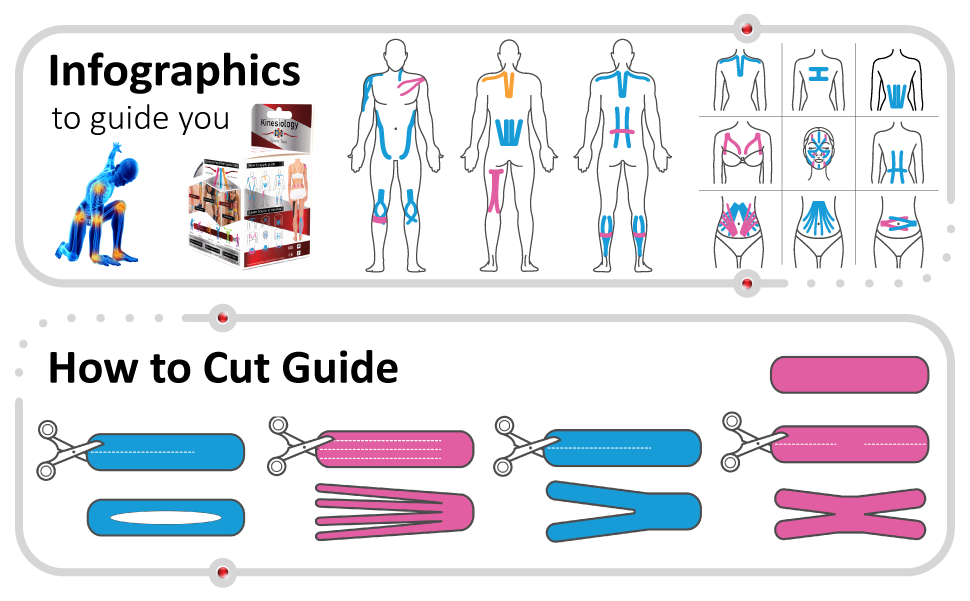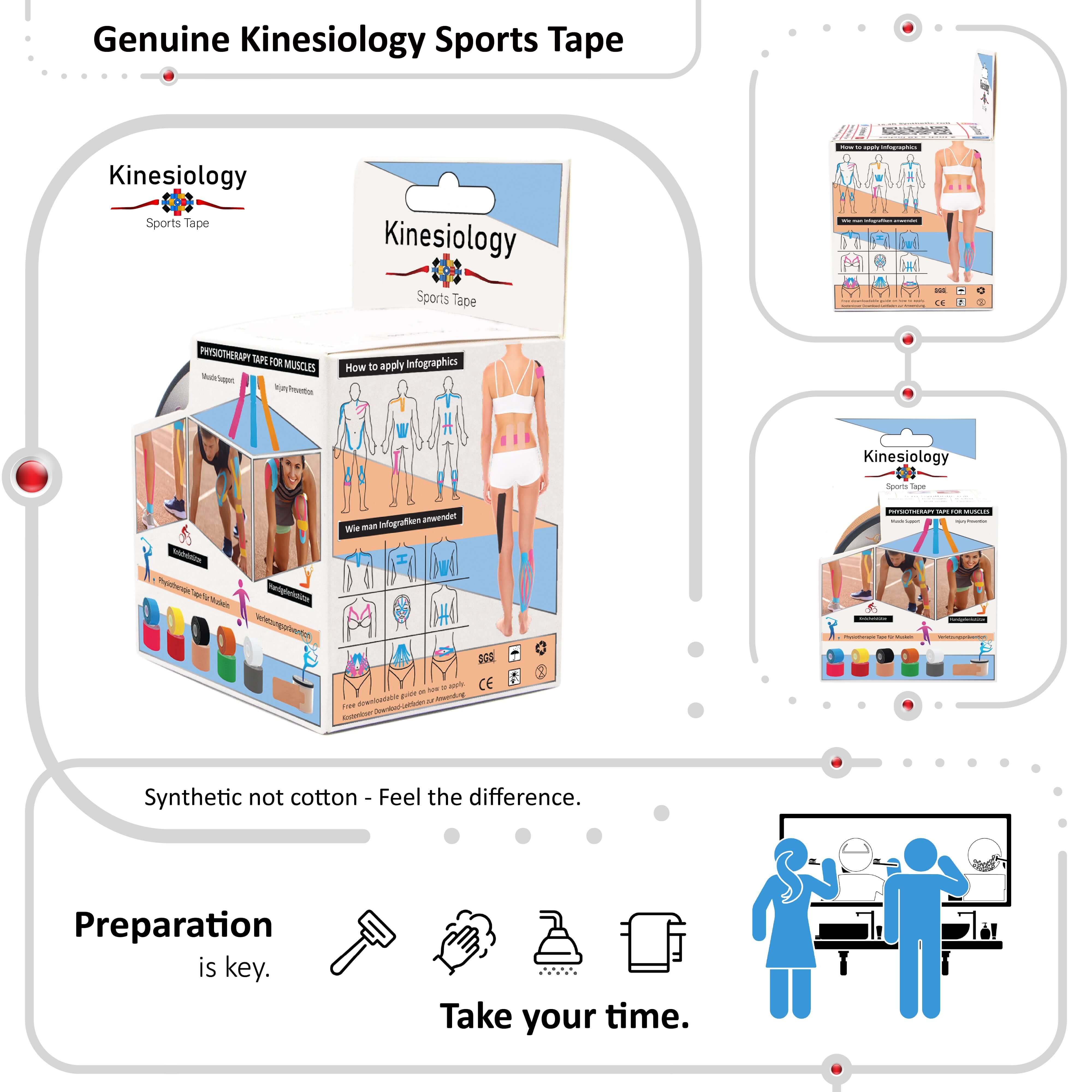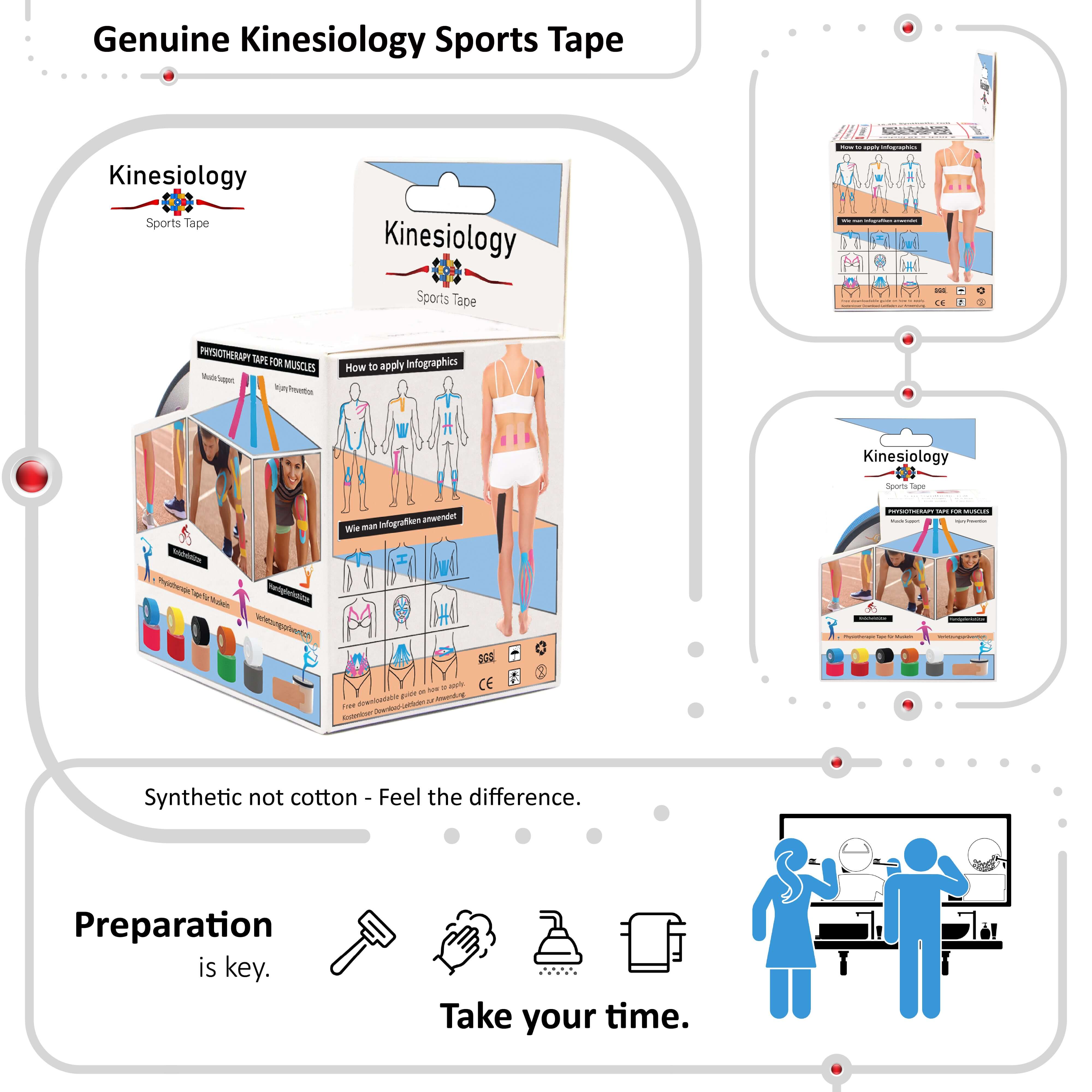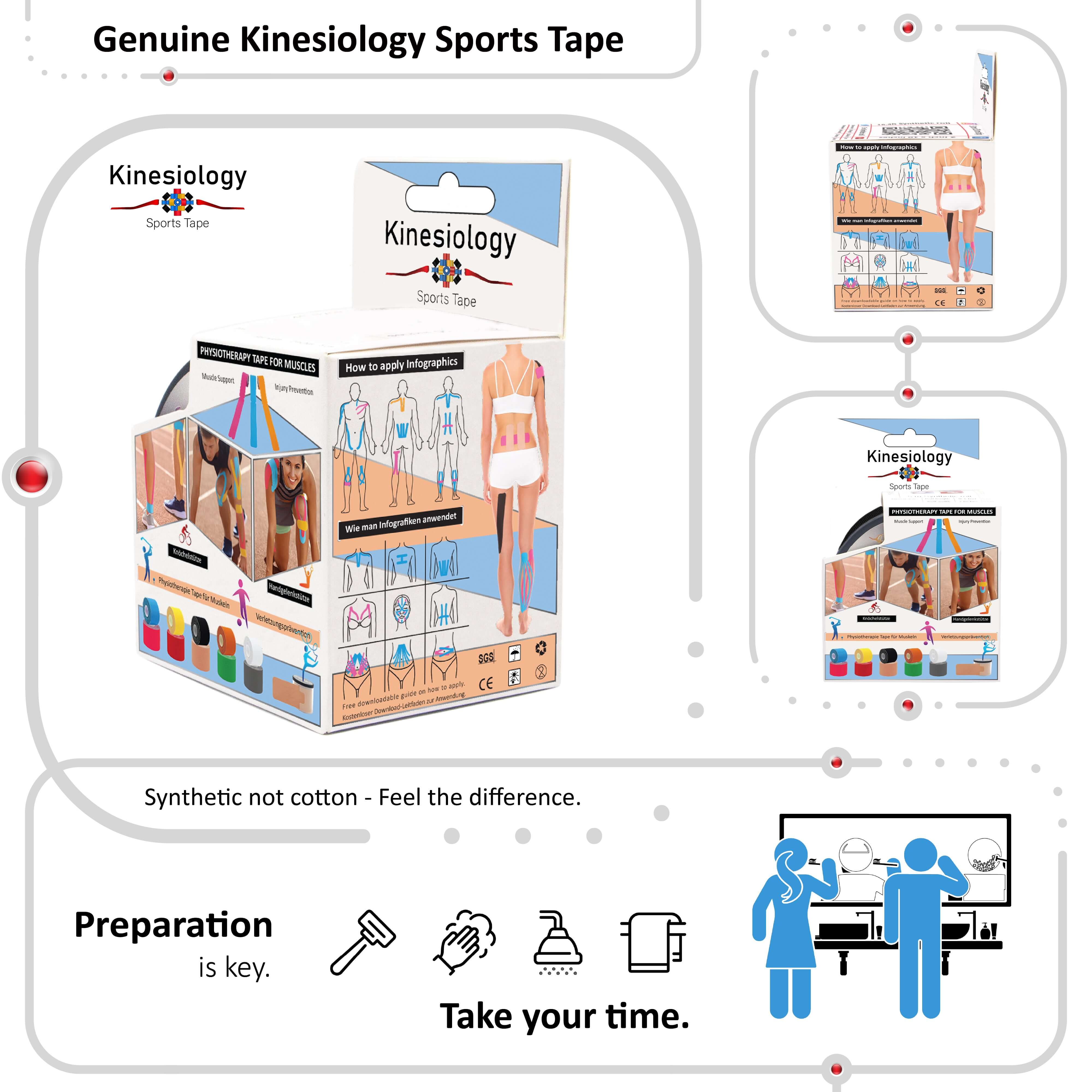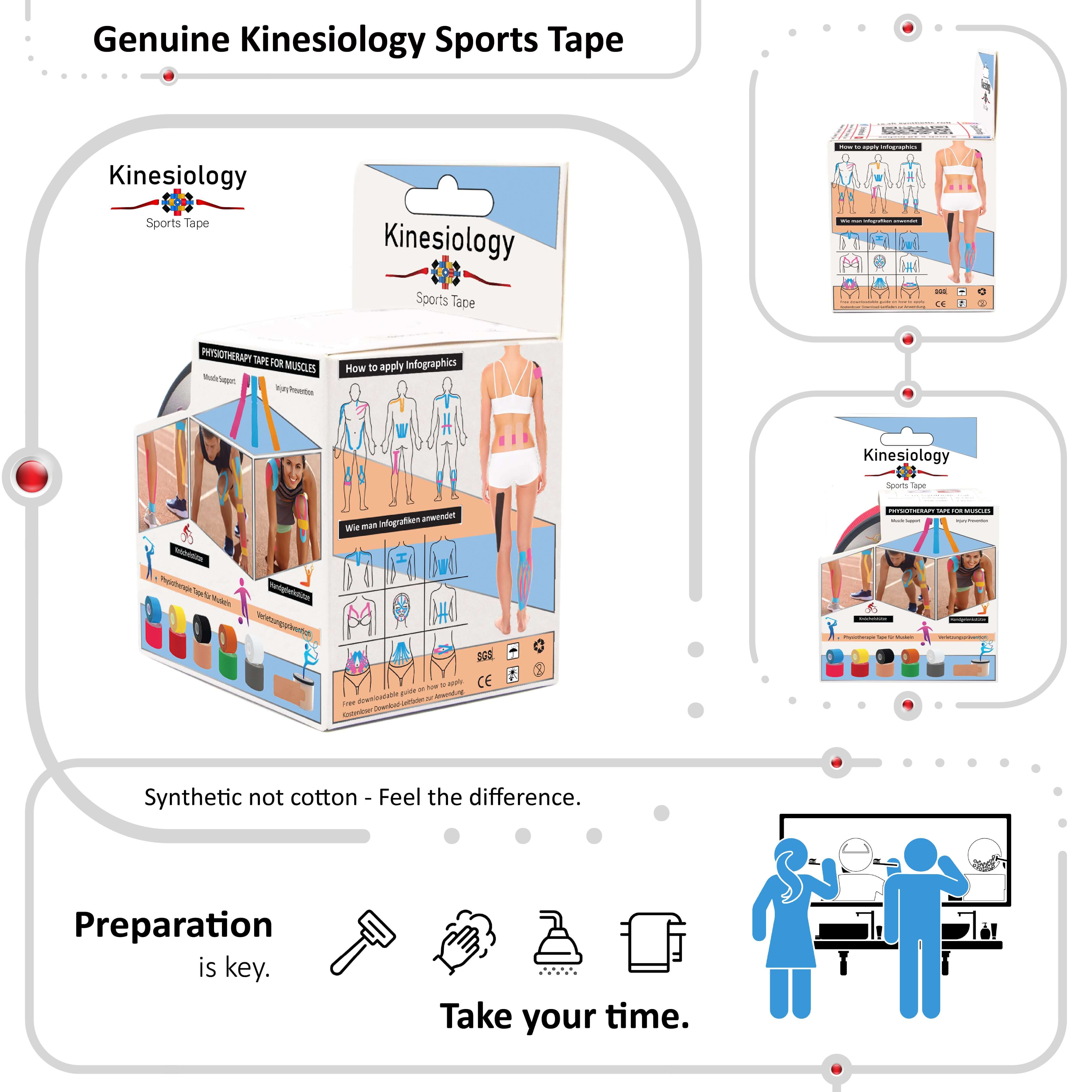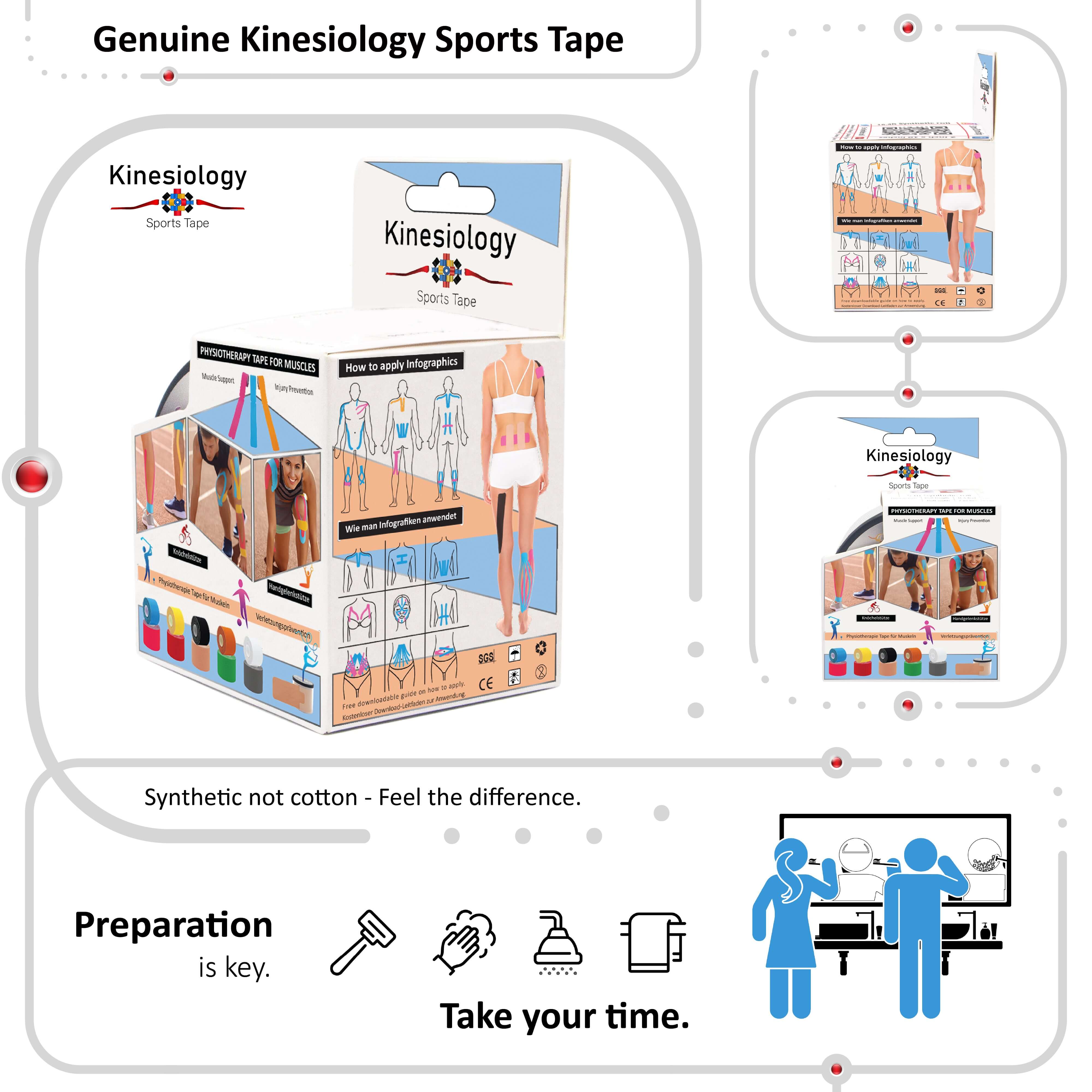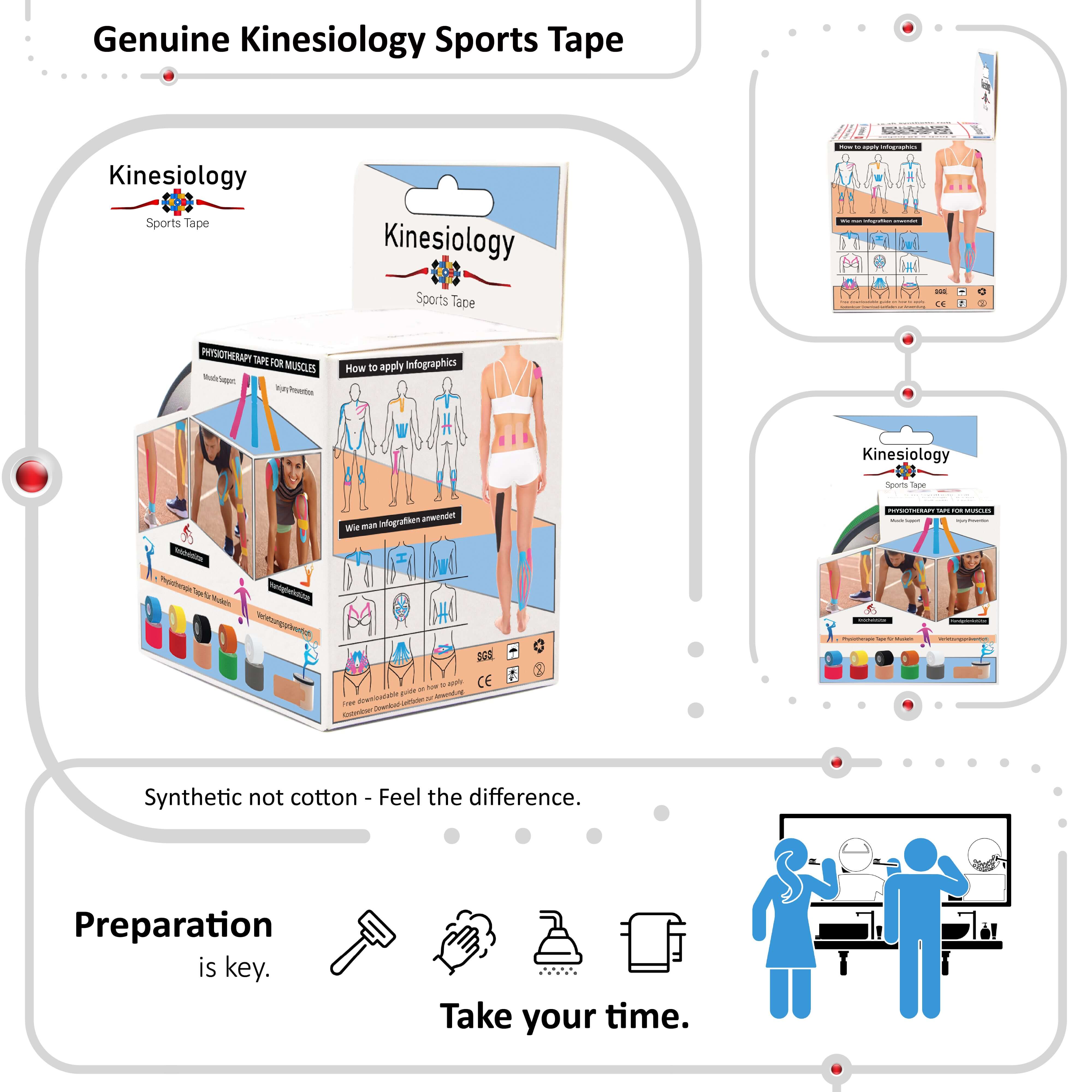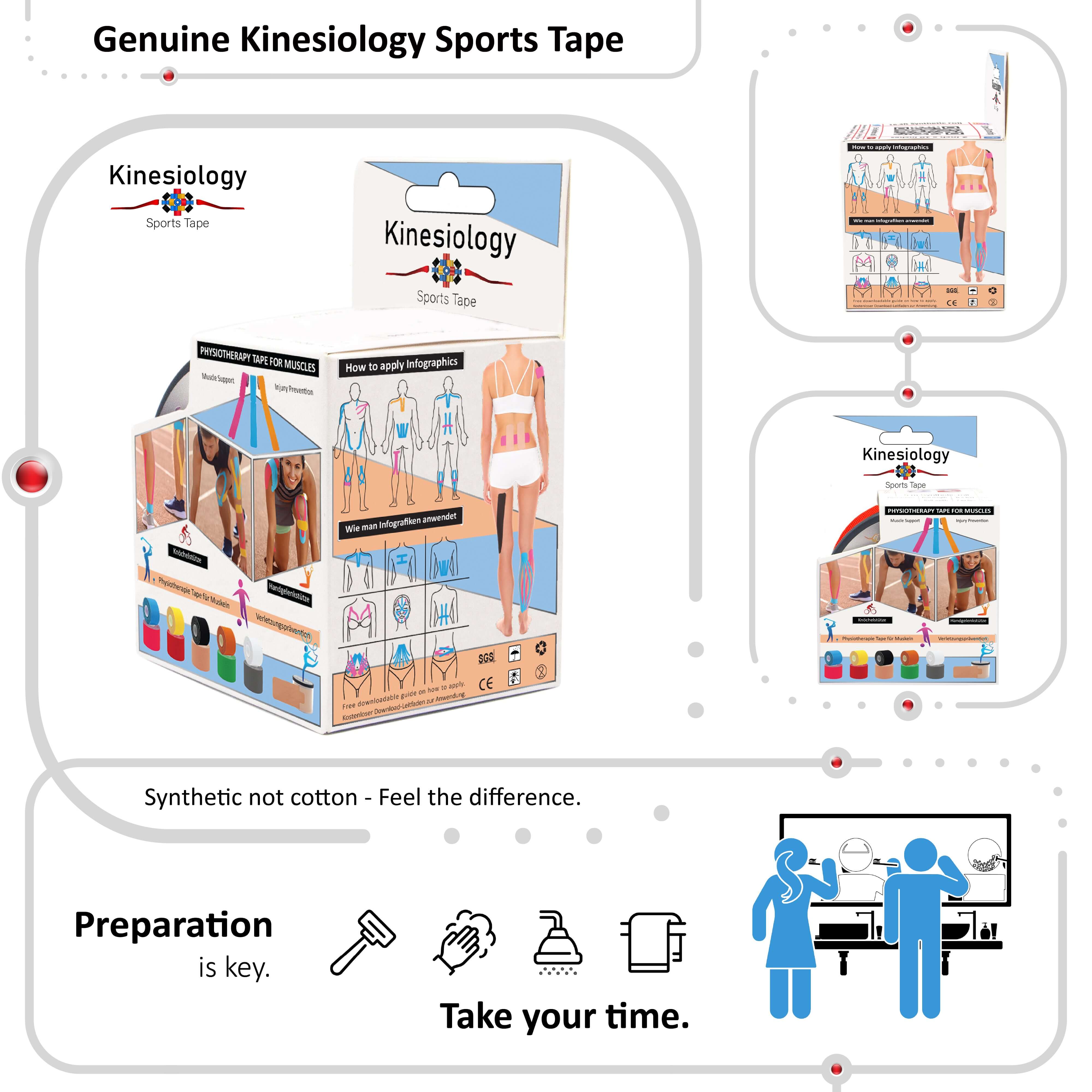
How Does Kinesiology Tape Work

In the realm of sports medicine and physical therapy, kinesiology tape has emerged as a versatile tool for managing pain, preventing injuries, and enhancing performance. Its colorful appearance and unique application methods have piqued the interest of athletes and individuals seeking relief from aches and pains. But how exactly does kinesiology tape work? Let's delve into the science behind this innovative therapeutic aid.
Understanding Kinesiology Tape:
Kinesiology tape is a thin, stretchy adhesive tape made of cotton or synthetic fibers with an acrylic adhesive. It is designed to mimic the elasticity of human skin and can stretch up to 140% of its original length. Unlike traditional rigid athletic tape, which is primarily used for immobilization and support, kinesiology tape is applied directly to the skin to provide dynamic support without limiting movement.
How Does Kinesiology Tape Work?
1. Mechanical Support:
One of the key mechanisms of action of kinesiology tape is its ability to provide mechanical support to muscles and joints. When applied to the skin, the tape gently lifts the epidermis away from the underlying tissues, creating space and reducing pressure on pain receptors and sensitive structures. This can help alleviate pain and discomfort associated with injuries, strains, and overuse.
2. Proprioceptive Feedback:
Kinesiology tape also works by enhancing proprioceptive feedback, which is the body's awareness of its position in space. The unique wave-like pattern of the tape creates microcircuits on the skin, stimulating sensory receptors and providing feedback to the brain about movement and positioning. This increased proprioceptive input helps improve muscle coordination, joint stability, and overall body awareness.
3. Pain Modulation:
Another mechanism of action of kinesiology tape is pain modulation. By gently compressing the skin and underlying tissues, the tape activates mechanoreceptors and nociceptors, which are involved in the transmission of pain signals. This stimulation can help interrupt the pain signals being sent to the brain, resulting in reduced pain perception and improved comfort.
4. Lymphatic Drainage:
Kinesiology tape can also facilitate lymphatic drainage, which is the body's natural mechanism for removing excess fluid and waste products from tissues. The gentle stretching and recoiling of the tape create a pumping action that helps to increase lymphatic flow, reducing swelling and promoting faster recovery from injury or inflammation.
In conclusion, kinesiology tape works through a combination of mechanical support, proprioceptive feedback, pain modulation, and lymphatic drainage. By harnessing these mechanisms of action, kinesiology tape can provide effective relief for a wide range of musculoskeletal conditions and injuries. Whether you're an athlete recovering from a sprain or an individual managing chronic pain, kinesiology tape offers a versatile and non-invasive solution to support your body's natural healing processes.
Understanding Kinesiology Tape:
Kinesiology tape is a thin, stretchy adhesive tape made of cotton or synthetic fibers with an acrylic adhesive. It is designed to mimic the elasticity of human skin and can stretch up to 140% of its original length. Unlike traditional rigid athletic tape, which is primarily used for immobilization and support, kinesiology tape is applied directly to the skin to provide dynamic support without limiting movement.
How Does Kinesiology Tape Work?
1. Mechanical Support:
One of the key mechanisms of action of kinesiology tape is its ability to provide mechanical support to muscles and joints. When applied to the skin, the tape gently lifts the epidermis away from the underlying tissues, creating space and reducing pressure on pain receptors and sensitive structures. This can help alleviate pain and discomfort associated with injuries, strains, and overuse.
2. Proprioceptive Feedback:
Kinesiology tape also works by enhancing proprioceptive feedback, which is the body's awareness of its position in space. The unique wave-like pattern of the tape creates microcircuits on the skin, stimulating sensory receptors and providing feedback to the brain about movement and positioning. This increased proprioceptive input helps improve muscle coordination, joint stability, and overall body awareness.
3. Pain Modulation:
Another mechanism of action of kinesiology tape is pain modulation. By gently compressing the skin and underlying tissues, the tape activates mechanoreceptors and nociceptors, which are involved in the transmission of pain signals. This stimulation can help interrupt the pain signals being sent to the brain, resulting in reduced pain perception and improved comfort.
4. Lymphatic Drainage:
Kinesiology tape can also facilitate lymphatic drainage, which is the body's natural mechanism for removing excess fluid and waste products from tissues. The gentle stretching and recoiling of the tape create a pumping action that helps to increase lymphatic flow, reducing swelling and promoting faster recovery from injury or inflammation.
In conclusion, kinesiology tape works through a combination of mechanical support, proprioceptive feedback, pain modulation, and lymphatic drainage. By harnessing these mechanisms of action, kinesiology tape can provide effective relief for a wide range of musculoskeletal conditions and injuries. Whether you're an athlete recovering from a sprain or an individual managing chronic pain, kinesiology tape offers a versatile and non-invasive solution to support your body's natural healing processes.




